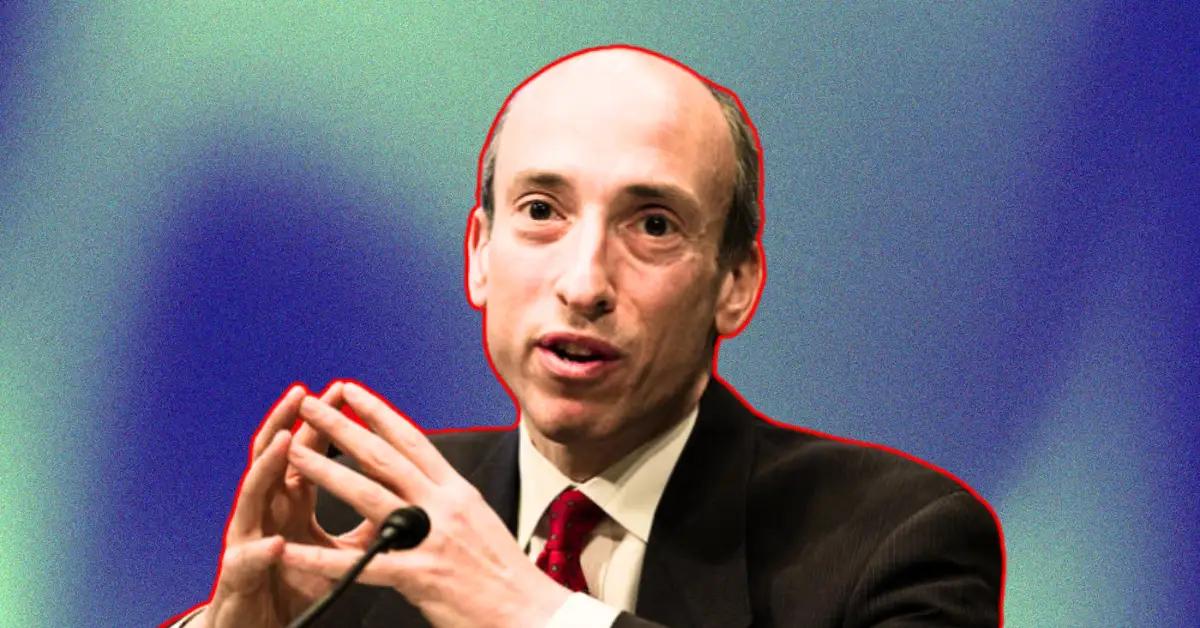
The Crypto Conundrum: When Regulators Wear Two Faces
Dude, let’s talk about the ultimate plot twist in crypto regulation: Gary Gensler, the SEC’s former top cop, might’ve been low-key rooting for the very thing he publicly policed like a mall cop on Red Bull. Seriously, this revelation—courtesy of ex-Congressman Patrick McHenry—has the financial world buzzing like a Bitcoin miner’s GPU. Was Gensler’s tough-on-crypto act just political theater? And what does this double life mean for the future of digital assets? Grab your detective hats, folks. We’re digging into the *real* story behind the regulatory smoke and mirrors.
The Jekyll & Hyde of Crypto Regulation
Gensler’s public persona was the stuff of crypto bro nightmares: stern warnings about volatility, manipulation, and tax evasion, delivered with the enthusiasm of a DMV clerk. But behind closed doors? McHenry claims the man was practically a blockchain whisperer, privately acknowledging crypto’s potential while playing bad cop to survive Senate confirmations and political crossfires.
This isn’t just gossip—it’s a neon sign flashing *”Politics Runs This Show.”* Regulators, it turns out, aren’t immune to the oldest game in D.C.: saying what you gotta say to keep your seat. The takeaway? When a regulator’s public stance feels like a poorly scripted Netflix villain, ask who’s writing the script. Spoiler: It’s probably not logic.
The Puppet Strings of Political Pressure
Here’s the tea: Crypto regulation isn’t just about protecting investors—it’s a high-stakes game of political Twister. Gensler’s alleged pivot reveals how regulatory bodies bend to the winds of partisan agendas. Need to appease anti-crypto senators? Cue the tough talk. But whisper to industry insiders about blockchain’s promise? That’s the *real* regulatory mood ring.
The fallout? A regulatory whiplash that leaves the crypto industry dizzy. One day, it’s “innovation stifling” rules; the next, hints of ether ETFs. This inconsistency isn’t just annoying—it’s toxic for growth. Imagine building a business on quicksand, and you’ll understand why crypto startups side-eye regulators like a shady Craigslist seller.
A Glimmer of Hope (or Just Another Mirage?)
McHenry’s bombshell isn’t just drama—it’s a potential roadmap. If even Gensler harbored crypto sympathies, future regulators might ditch the performative skepticism for pragmatic frameworks. Think clearer rules, fewer gotchas, and maybe—just maybe—a path for institutional money to stop treating crypto like a back-alley poker game.
But hold the confetti. Regulatory clarity isn’t a given; it’s a fight. The industry needs to push for rules that protect without strangling, like a yoga instructor adjusting your downward dog. And lawmakers? They’ll need to decide if crypto is a villain to fear or a tool to harness—no more waffling.
The Verdict: Trust No Narrative (Yet)
Here’s the kicker: Gensler’s saga proves crypto regulation is less about *what’s right* and more about *who’s asking.* The industry’s future hinges on cutting through the political noise to demand consistency. Will regulators step up, or will crypto remain a political football? Either way, one thing’s clear: In the game of thrones between innovation and bureaucracy, always bet on chaos.
Friends, the lesson isn’t just about Gensler—it’s about questioning every “official” stance. Because in finance, as in thrift stores, the best finds are often hidden under layers of dust. Now, who’s got the lint roller?
